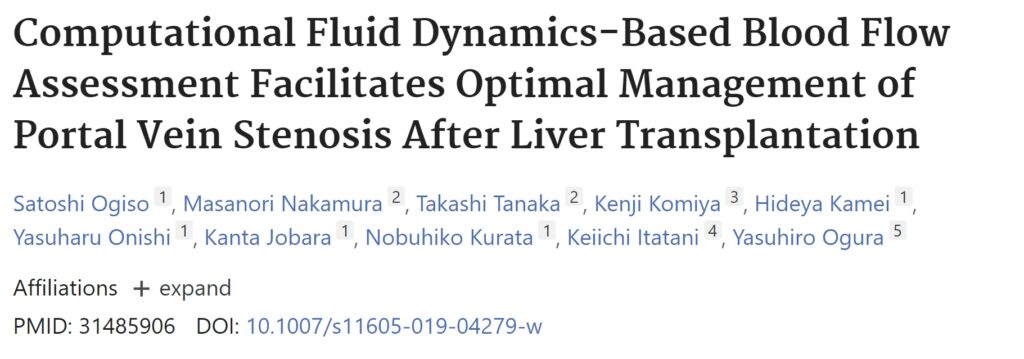Computational Fluid Dynamics-Based Blood Flow Assessment Facilitates Optimal Management of Portal Vein Stenosis After Liver Transplantation
Portal vein stenosis develops in 3.4–14% of split liver transplantation and its early detection and treatment are essential
to achieve long-term graft survival,although the diagnostic capability of conventional modalities such as Doppler ultrasound and
computed tomography is limited.
This study used computational fluid dynamics to analyze portal vein hemodynamics in the management of posttransplant portal vein stenosis.
The result shows that The computational fluid dynamics analyses are useful for prediction, early detection, and follow-up of post-transplant
portal vein stenosis and would be a promising technology in post-transplant management.
Reference
Satoshi Ogiso & Masanori Nakamura & Takashi Tanaka & Kenji Komiya & Hideya Kamei & Yasuharu Onishi & Kanta Jobara & Nobuhiko Kurata & Keiichi Itatani & Yasuhiro Ogura, "Computational Fluid Dynamics-Based Blood Flow Assessment Facilitates Optimal Management of Portal Vein Stenosis After Liver Transplantation", Journal of Gastrointestinal Surgery, (2020) 460-461.
Go To the Journal Page
